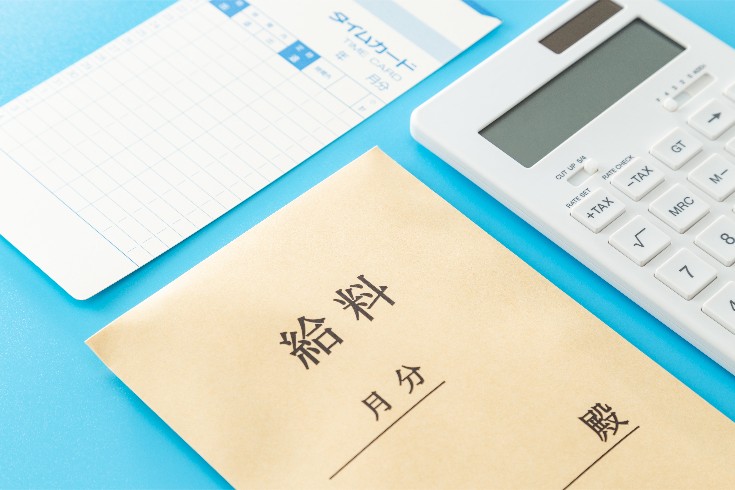Explanation of Key Regulations on Wages, Working Hours, and Leave in Japanese Labor Law

In managing a business in Japan, a deep understanding of labor law, especially regulations concerning wage payments, working hours, and leave, is not merely a human resource management issue but a fundamental element of a company’s legal risk management. These regulations are designed to protect the stability and health of workers’ lives, and compliance with them is a legal obligation imposed on companies. The Japanese Labor Standards Act sets out a wide range of detailed rules, from strict principles regarding the method of wage payments to complex regulations on the upper limits of overtime work, employer obligations to ensure the acquisition of annual paid leave, and special provisions to protect specific workers such as women and minors. These rules directly impact the day-to-day operations of companies, the design of salary systems, and the content of labor contracts. This article will provide a professional and practical perspective based on Japanese laws and key case precedents on these important themes.
Basic Principles of Wage Payment Under Japanese Law
The Japanese Labor Standards Act (Article 24) establishes five basic principles regarding the payment of wages with the objective of ensuring the stability of workers’ lives. These principles, known as the “Five Principles of Wage Payment,” form the foundation of wage payment practices in Japan. While these principles are strict legal requirements, exceptions have been made to accommodate modern business practices. However, to apply these exceptions, it is essential to adhere to the strict procedures set by law, rather than relying on mere verbal agreements.
Principle of Payment in Currency
Firstly, wages must be paid in the legal currency of Japan, that is, in cash. This prohibits payment in kind, such as company products, which may have unstable value or be difficult to convert into cash, ensuring that workers receive a stable and guaranteed value for their labor.
There are significant exceptions to this principle. The most common is the transfer to a bank account or similar, with the individual consent of the worker. When adopting this method, employers must ensure that workers can withdraw cash on the designated payment date. Additionally, recent legal revisions have made it possible to pay wages into accounts of fund transfer service providers designated by the Minister of Health, Labour and Welfare, a so-called “digital payment,” provided there is consent from the worker. Regardless of the exception used, the clear consent of each worker is essential, and employers are not allowed to unilaterally determine the method of payment.
Principle of Direct Payment
Secondly, wages must be paid directly to the worker without any intermediaries. This principle aims to prevent the interception of wages by third parties. Therefore, even legal guardians or statutory agents of the worker are not allowed to receive wages on behalf of the worker, as a rule. However, in cases where the worker is unable to receive wages due to illness or other reasons, family members or others may be allowed to receive the wages as a “messenger” conveying the worker’s intent, which is different from acting as an agent.
Principle of Full Payment
Thirdly, the full amount of wages must be paid. Employers are prohibited from unilaterally deducting damages or other compensation from wages (offsetting) under this principle.
However, there are exceptions to this principle as well. Deductions such as income tax, resident tax, and social insurance premiums, which are defined by other laws, can be legally withheld. For non-statutory items such as company housing rent or union dues, a written agreement (so-called labor-management agreement) must be made with a labor union representing the majority of workers or a representative of the majority of workers. Recent court cases have also determined that, in addition to this labor-management agreement, a basis for deductions must also be included in the work rules, emphasizing the need for strict procedures.
Principles of Payment at Least Once a Month and on a Specified Date
The fourth and fifth principles state that wages must be paid “at least once a month” and “on a specified date.” These two principles aim to ensure a regular and predictable income for workers, contributing to the stability of their lives. A “specified date” must be concretely identified, such as “the 25th of every month,” and cannot be a range like “between the 20th and 25th of every month” or a date that varies significantly each month, such as “the third Friday of every month.”
These principles do not apply to wages paid on an ad hoc basis, such as bonuses or retirement pay.
Overtime, Holiday, and Late-Night Work and Premium Wages Under Japanese Law
The Japanese Labor Standards Act protects workers’ health by imposing strict limits on working hours. As a general rule, working hours must not exceed 8 hours per day and 40 hours per week (Article 32 of the Japanese Labor Standards Act). Having employees work beyond these statutory working hours or on statutory holidays is legally considered an exceptional measure.
The Foundation of Overtime Work: The “Article 36 Agreement” Under Japanese Labor Standards Law
In order to have employees work overtime beyond the statutory working hours or on statutory holidays in Japan, employers must conclude a written agreement with the labor union representing the majority of the workers at the workplace, or if there is no such union, with a representative of the majority of the workers. This agreement must then be submitted to the competent Labor Standards Inspection Office. Known as the “Article 36 Agreement” (Saburoku Kyoutei), it is named after Article 36 of the Japanese Labor Standards Act, which serves as its legal basis. In recent years, the submission of this agreement has been encouraged to be done online using the government’s electronic application system, “e-Gov,” allowing the head office to file for multiple workplaces collectively.
Regulation of Overtime Work Limits Under Japanese Law
Following the legal revisions in 2019, strict upper limits with penalties have been established for overtime work that can be extended through the 36 Agreement. This regulation is a crucial measure to prevent serious issues such as death from overwork. The regulation has a two-tier structure. Firstly, the basic limit for overtime work is set at 45 hours per month and 360 hours per year.
Next, only in cases of temporary special circumstances, such as a sudden increase in workload, is it permitted to exceed these basic limits by setting a “special clause” in the 36 Agreement. However, even when applying the special clause, the following absolute limits set by law must not be exceeded:
- Overtime work must be within 720 hours per year.
- The total of overtime and holiday work must be less than 100 hours per month.
- For the total of overtime and holiday work, the average for any continuous period of 2, 3, 4, 5, or 6 months must be within 80 hours per month.
- Overtime work exceeding 45 hours per month is allowed only up to 6 times a year.
These limits apply to all businesses, regardless of whether they are large corporations or small and medium-sized enterprises. Furthermore, industries that had been granted a grace period, such as construction, automobile driving, and medical doctors, will also be subject to these overtime regulations from April 2024 (Reiwa 6), albeit with some different standards.
Overtime Pay Rates Under Japanese Labor Standards Law
Under Article 37 of the Japanese Labor Standards Act, employers are obligated to pay additional wages for overtime work, work on holidays, and late-night work, on top of the regular wages. The statutory minimum premium rates are as follows:
- Overtime work (work exceeding the statutory working hours): at least 25%
- Holiday work (work on statutory holidays): at least 35%
- Late-night work (work from 10 PM to 5 AM in principle): at least 25%
- Overtime work exceeding 60 hours per month: at least 50%
The higher premium rate for overtime work exceeding 60 hours per month serves as a financial incentive to curb particularly long overtime hours. These regulations should not be seen merely as a collection of individual numbers but as a systematic framework designed to comprehensively suppress excessive long working hours. The cap on working hours physically limits the amount of labor, while the premium pay rates impose an economic burden, together creating a structure that encourages the reduction of overall working hours.
Legal Requirements for the Fixed Overtime Payment System in Japan
Many companies in Japan adopt a system where a predetermined amount of overtime pay is included in the salary as a ‘fixed overtime payment.’ However, for this system to be legally valid, it must meet very strict requirements. The courts consistently demand the requirement of ‘clear distinction.’ This means that within the salary, the portion that is the compensation for regular working hours and the portion that corresponds to overtime pay must be clearly distinguishable in terms of amount.
A leading case on this point is the International Automobile Incident (Supreme Court of Japan, March 30, 2020). In this case, the Supreme Court clarified that it is not sufficient for the salary breakdown to simply have separate names on the pay statement; it questioned whether the payments were substantively personalityized as overtime pay. The wage system in question deducted the amount of the surcharge (equivalent to the fixed overtime payment) when calculating the commission pay. The Supreme Court judged that such a mechanism merely changed the name of part of the commission pay that should have been paid originally and lacked the substance of overtime pay. As a result, the system did not meet the requirement of clear distinction and was concluded to be invalid.
This case demonstrates the judiciary’s strong intention not to allow employers to design formal and artificial wage systems to evade the obligation to pay overtime wages. To effectively operate a fixed overtime payment system, it is essential that this allowance is independent of other wage items and functions purely as compensation for overtime work.
| Feature | Valid Example | Example Likely to Be Invalid | Legal Basis & Commentary |
| Pay Statement Display | Base Salary: ¥300,000 Fixed Overtime Allowance (for 20 hours): ¥50,000 | Monthly Salary: ¥350,000 (including fixed overtime allowance for 20 hours) | In the valid example, the base salary and allowance are clearly distinguished in terms of amount. In the invalid example, it is not discernible which part is the base salary and which part is the allowance. |
| Calculation Method | The number of hours and the amount for the fixed overtime allowance are clearly stated in the employment contract or work rules. | Commission pay is calculated as ‘the amount corresponding to sales performance minus the paid fixed overtime allowance.’ | The invalid example involves offsetting other wages (commission pay) by reducing them with the fixed overtime allowance, lacking the substance of overtime pay. This logic corresponds to that which was deemed invalid in the International Automobile Incident judgment. |
| Relationship with Actual Overtime Hours | If the actual overtime hours exceed the hours covered by the fixed overtime allowance, the difference is paid separately. | No matter the actual overtime hours, a fixed amount of salary is always paid, and no settlement is made for the excess. | The fixed overtime allowance is merely an advance payment for overtime wages. Not paying the difference when the actual overtime exceeds the fixed amount violates the principle of full payment. |
The Legal Framework for Annual Paid Leave in Japan
Annual paid leave in Japan is a paid vacation system established under Article 39 of the Japanese Labor Standards Act, designed to allow workers to recuperate from physical and mental fatigue and ensure a fulfilling life.
Eligibility and Number of Days for Annual Paid Leave
All workers who meet the following two criteria are entitled to annual paid leave:
- Having continuously worked for six months from the date of hire.
- Having attended work for at least 80% of all working days during those six months.
Once these criteria are met, workers are granted 10 working days of annual paid leave. Subsequently, the number of granted days increases with the length of continuous service, reaching a maximum of 20 days for those who have worked for more than 6 years and 6 months. The rights to the granted leave are valid for two years.
Mandatory Seasonal Designation of Paid Leave Days Under Japanese Employment Practices
Following the legal revisions in 2019, employers in Japan have been tasked with a new obligation. They must ensure that workers who are granted more than 10 days of annual paid leave take at least five days of that leave within one year from the date of entitlement. If a worker voluntarily takes more than five days of leave, there is no issue. However, for those who have not taken at least five days, employers are required to designate the timing of the leave after consulting with the workers. This is a robust measure designed to eliminate hesitation in taking leave and to promote its utilization.
The Rights of Workers to Designate Leave Dates and Employers’ Rights to Change Them Under Japanese Law
The legal core of the operation of annual paid leave in Japan lies in the relationship between two rights: “the right of workers to designate leave dates” and “the right of employers to change those dates.” The principle is the “right to designate leave dates,” which allows workers to decide when to take their leave. Legally, the leave is established once a worker specifies a desired date for their absence.
In contrast, employers can exercise their “right to change leave dates” only under very limited circumstances. This right can be invoked if granting leave on the dates specified by the worker would “impede the normal operation of the business,” allowing the employer to request that the leave be rescheduled to another time.
This balance of rights was defined by the Supreme Court in the Shiraishi Forestry Office case (Supreme Court decision, March 2, 1973 (1973)). The Supreme Court ruled that annual paid leave is not a “request” requiring the “approval” of the employer, but a “constitutive right” that is established by the unilateral declaration of the worker (designation of leave dates). Therefore, unless the employer exercises their right to change the dates, the leave is confirmed for the dates specified by the worker. The decision also established the important principle that the purpose of the leave is at the discretion of the worker, and that employers are not allowed to refuse leave or exercise their right to change the dates based on the purpose of the leave.
This legal power dynamic is intentionally designed to be asymmetrical, granting strong rights to workers and only limited defensive rights to employers. Therefore, company policies that mandate “approval” from a superior for taking leave or that inquire about the “reason” for leave are legally inappropriate and carry compliance risks. In corporate management, instead of looking for reasons to deny leave, it is required to plan and manage the business structure, such as securing alternative personnel, to ensure that workers can smoothly take their leave.
| Right | Holder | Nature of the Right | Conditions for Exercise |
| Worker’s Right to Designate Leave Dates | Worker | A constitutive right that establishes leave by unilaterally specifying the leave dates | Having unused annual paid leave days available |
| Employer’s Right to Change Leave Dates | Employer | An exceptional right to request changes to the dates specified by the worker | The employer must prove that granting leave on the specified dates would “impede the normal operation of the business” |
Employer-Initiated Work Suspension and Allowance Under Japanese Law
When a company suspends its employees due to managerial reasons, a system is in place to protect the livelihood of the workers. Article 26 of the Japanese Labor Standards Act stipulates that if an employer suspends an employee due to reasons attributable to the employer, the employer must pay an allowance (suspension allowance) of at least 60% of the average wage.
The most crucial factor in determining the occurrence of this obligation is the interpretation of the phrase “reasons attributable to the employer.” This concept is interpreted very broadly under labor law. It includes not only intentional or negligent acts by the employer but also suspensions due to managerial or operational obstacles on the employer’s side. For instance, reasons such as a shortage of raw materials, a decrease in orders due to the parent company’s financial difficulties, or machinery malfunctions are considered “reasons attributable to the employer,” even if there is no direct fault on the part of the employer.
An important precedent that supports this broad interpretation is the Northwest Airlines case (Supreme Court of Japan, July 17, 1987). This judgment, which dealt with a suspension due to a strike, indicated that the purpose of Article 26 of the Labor Standards Act encompasses a broader range of employer’s managerial obstacles than the reasons for attribution under civil law. Legal exemption from the payment obligation is limited to true force majeure events that occur outside the business, such as earthquakes or typhoons, and which the employer could not avoid despite exercising the utmost care.
The rationale behind this legal interpretation is the concept of risk distribution associated with business operations. Risks inherent in business management, such as market fluctuations or the circumstances of business partners, are fundamentally considered to be borne by the employer, reflecting a social policy judgment. Therefore, as long as the reason for the suspension arises within the employer’s “sphere of control,” even if it is caused by external factors, the employer is obligated to pay at least the minimum suspension allowance to ensure the livelihood of the workers.
Provisions for the Protection of Women and Minors
Under Japanese law, the Japanese Labor Standards Act takes into account historical backgrounds and physical personalityistics, setting forth special provisions for the protection of female workers and minors, who are deemed to require particular care.
Maternity Protection for Female Workers
To safeguard the health of female workers (legally referred to as “pregnant and postpartum women”) during and after pregnancy, the following provisions have been established. Firstly, maternity leave (Article 65 of the Japanese Labor Standards Act) is guaranteed. Prenatal leave can be taken from six weeks before the expected date of delivery (or 14 weeks in the case of multiple pregnancies) if requested by the worker. Conversely, postnatal leave is a mandatory period during which employers must not allow the worker to work, starting from the day after delivery and lasting for eight weeks, regardless of whether the worker requests it or not. In particular, the first six weeks postpartum are considered an absolute leave period for the mother’s recovery, and the worker cannot be employed even if she wishes to return to work. However, after the six-week period, the worker may return to work if she requests it and a physician deems it safe for her to engage in certain tasks.
Furthermore, various restrictions are imposed on the labor of pregnant and postpartum women. Employers must not assign them to tasks involving heavy lifting or work in places where harmful gases are emitted (Article 64-3 of the Japanese Labor Standards Act). Additionally, if requested by the pregnant or postpartum worker, employers cannot require them to perform overtime work, work on holidays, or work late at night (Article 66 of the Japanese Labor Standards Act). These protective provisions are divided into obligations that arise upon request (such as exemption from overtime work) and absolute obligations that employers must comply with regardless of any request (such as the six-week postnatal leave). Companies must accurately understand these differences and establish appropriate labor management systems accordingly.
Protection of Minors
Workers under the age of 18 (legally referred to as “minors”) are subject to particularly strict regulations to protect their healthy physical and mental development.
As a general rule, minors cannot be made to work overtime or on holidays, and they are prohibited from working during the night (from 10 p.m. to 5 a.m.) (Articles 60 and 61 of the Japanese Labor Standards Act). Additionally, they are completely banned from engaging in dangerous or harmful tasks such as operating cranes or working at heights, as well as labor inside mines (Articles 62 and 63 of the Japanese Labor Standards Act).
There are also special rules regarding contracts. Legal guardians or custodians cannot enter into labor contracts on behalf of minors; contracts must always be made directly with the individual (Article 58 of the Japanese Labor Standards Act). Moreover, wages must be paid directly and in full to the minor, and it is prohibited for guardians or others to receive the wages on their behalf (Article 59 of the Japanese Labor Standards Act). These provisions are crucial protective measures to prevent minors from being economically exploited or coerced into unwilling labor.
Summary
As outlined in this article, regulations concerning wages, working hours, holidays, and the protection of specific workers under Japanese labor law are incredibly detailed and multi-layered. These rules are not mere guidelines but strict legal obligations that carry penalties and civil liabilities in case of violation. In particular, recent legal revisions such as the regulation of overtime work limits and the mandatory acquisition of annual paid leave demand more proactive labor management from employers than ever before. Furthermore, the trends in court precedents regarding fixed overtime allowances and leave benefits suggest that formalistic responses are insufficient and that the substance of the system is being scrutinized. Accurately understanding and complying with these complex regulations is an essential foundation for building healthy labor relations and ensuring the sustainable growth of a company.
Monolith Law Office has a proven track record of providing abundant advice and support on Japanese labor law matters, including the themes discussed in this article, to a wide range of clients both domestically and internationally. Our firm employs several attorneys who are native English speakers with foreign legal qualifications, enabling us to bridge the gap between international business practices and Japanese regulatory requirements. We offer precise and practical solutions to the specific challenges our clients face. We provide specialized legal support to navigate through this complex regulatory environment.
Category: General Corporate





















